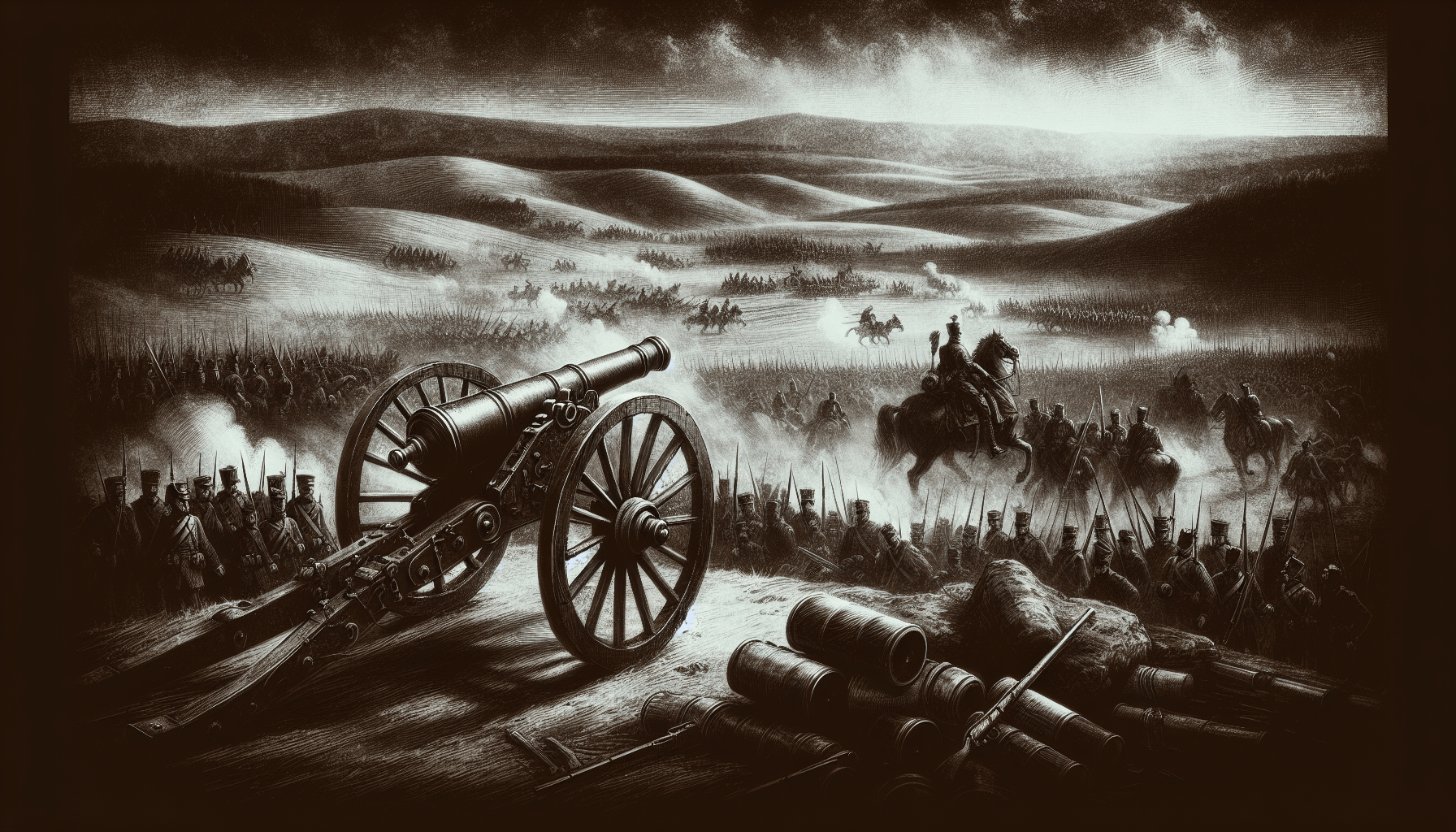The Battle of Aspern-Essling in 1809 represents a critical turning point during the Napoleonic Wars, showcasing the unanticipated challenges that can arise even for formidable leaders like Napoleon Bonaparte. In an effort to capitalize on Austria’s vulnerability following previous defeats, Archduke Charles executed a strategic invasion during a period when Napoleon was distracted by his military campaigns in Spain. This article will explore the circumstances leading to this battle, the tactical maneuvers employed by both sides, and the significant outcomes that ultimately marked a notable defeat for Napoleon’s forces.
This analysis will detail the complexities and strategies utilized in the conflict, examining the military innovations introduced by the Austrian forces and the challenges faced by Napoleon’s troops. You will gain insight into the battle’s operational components, including troop formations, command strategies, and the implications of overconfidence in military leadership. By understanding these elements, a clearer context for this fierce encounter will emerge, revealing how the Battle of Aspern-Essling not only altered the course of the campaign but also shaped the broader narrative of the Napoleonic Wars.
The Napoleonic Wars: The Battle of Aspern-Essling

Background of the Napoleonic Wars
Overview of the Napoleonic Wars
The Napoleonic Wars, a series of conflicts from 1803 to 1815, involved an array of European nations fighting against the expansionist ambitions of Napoleon Bonaparte. Following the French Revolution, which transformed France into a republic, Napoleon quickly rose to power, eventually declaring himself Emperor. His military campaigns aimed to spread revolutionary ideals and French influence across the continent. The wars were characterized by significant battles, shifting alliances, and profound impacts on the political landscape of Europe.
Major European Powers Involved
The primary belligerents in the Napoleonic Wars included France, Britain, Austria, Prussia, and Russia, among others. France, under Napoleon’s command, sought to demonstrate military supremacy and spread its revolutionary principles, while the other powers formed coalitions to counter this hegemony. Austria, in particular, became a significant adversary, working tirelessly to reverse the losses it sustained, notably during the 1805 Battle of Austerlitz, where it faced a crushing defeat.
Timeline Leading to the Battle
The lead-up to the Battle of Aspern-Essling in May 1809 gives a glimpse into the tensions that marked this tumultuous period. After experiencing setbacks in Spain, Napoleon faced new challenges as Austria sought revenge for its previous humiliations. The Austrians, led by Archduke Charles, planned an offensive against the French forces, culminating in an invasion of Bavaria. This prelude set the stage for one of the most critical confrontations of the Napoleonic Wars.
Prelude to the Battle of Aspern-Essling
Austrian Aspirations for Revenge
The Austrian willingness to engage in military action stemmed primarily from a profound desire for retribution after the disastrous defeat at Austerlitz. Archduke Charles understood the necessity to reform the Austrian military apparatus to counter the tactical innovations introduced by the French. His desire to reclaim Austria’s status in Europe galvanized efforts to confront French dominance.
Napoleon’s Overconfidence
Napoleon’s prevailing belief in his military genius sometimes led to overconfidence. Having transitioned triumphantly through various campaigns, he underestimated the resolve and capability of the Austrian forces, assuming his strategic acumen would all but guarantee victory at Aspern-Essling. This overconfidence ultimately proved to be a pivotal element in the battle’s outcome.
Strategic Significance of Vienna
Vienna stood as a crucial geopolitical hub, its control being synonymous with influence over Central Europe. For Napoleon, capturing Vienna would not only symbolize a tactical advantage but also serve his campaign’s overarching goal of cementing French power across the continent. Thus, the city’s importance loomed large before both sides as they prepared for conflict.
Key Players in the Battle
Napoleon Bonaparte
As the leader of the French forces, Napoleon Bonaparte was both a strategic mastermind and a complicated figure driven by ambitious aspirations. His previous conquests had established him as the preeminent military leader in Europe, and his presence on the battlefield inspired both fear and loyalty among his troops.
Archduke Charles of Austria
Archduke Charles, the younger brother of Holy Roman Emperor Francis II, was instrumental in Austria’s military strategies against Napoleon. His innovative reforms and past experience significantly influenced Austria’s operations in the Napoleonic Wars. His strong leadership and resolve were critical in shaping the confrontations against the French, particularly at Aspern-Essling.
Notable Commanders on Both Sides
The battle featured notable figures on both sides, including Marshal Jean Lannes, a trusted lieutenant of Napoleon, and General Karl von Schwarzenberg, who led Austrian forces alongside Archduke Charles. These commanders contributed their tactical insight and experience, amplifying the conflict’s strategic depth.
Military Preparations
Austrian Army Reforms
In the years leading up to the battle, the Austrian military underwent substantial reforms. Recognizing past deficiencies, Archduke Charles copied French organizational structures and incorporated innovative infantry tactics. These adaptations aimed to improve command and control, enhance firepower, and elevate overall military effectiveness.
French Forces and Strategies
Napoleon’s army, though resting on past laurels, remained an imposing force. Despite being drawn some of his elite units into the Spanish campaign, he was still able to assemble a formidable contingent based on fresh recruits and loyal veterans. His strategy revolved around rapid maneuvers and confident assaults designed to subdue the Austrians before they could fully realize their military potential.
Logistical Challenges Faced by Both Armies
Both armies encountered significant logistical difficulties during their preparations. For the Austrians, difficulties in mobilizing and coordinating supplies across their territories hampered their ability to effectively mount an offensive. Likewise, the French faced challenges in maintaining their supply lines as they advanced toward Vienna, exacerbated by the complexities of crossing significant waterways like the Danube.

The Battle Begins
Initial Maneuvers and Attacks
On May 21, 1809, the Battle of Aspern-Essling commenced in earnest, with Austrian forces launching a coordinated assault against French positions. Initial tactics involved enveloping movements and probing attacks that tested French defenses while seeking to exploit any weakness.
French Defensive Positions
As the Austrian onslaught unfolded, French forces fortified positions in the towns of Aspern and Essling. Napoleon’s strategic comprehension of terrain contributed to a robust initial response, as his troops utilized the urban landscape to mount staunch defenses against Austrian advances.
Austrian Tactical Approaches
Austrian tactics emphasized combined arms maneuvers, blending infantry, cavalry, and artillery in a concerted bid to challenge the French. The Austrians employed their reforms, executing attacks in waves, seeking to overwhelm the French through sheer numbers and coordinated effort.
Tactical Developments
Use of Infantry and Cavalry
Both armies utilized infantry units as the backbone of their operations, although the French included more heavy cavalry formations meant to exploit breakthroughs in enemy lines. The effective use of infantry by the Austrians, along with defensive tactics by the French, made for intense clashes across the battlefield.
Artillery Engagements
Artillery played a critical role during the battle, with both sides deploying cannons in a bid to soften enemy positions prior to infantry assaults. Commanders keenly shifted artillery units in response to battlefield developments, creating a dynamic artillery duel that impacted troop morale and effectiveness.
Changes in Battle Tactics During the Engagement
As the day wore on, both commanders adapted their tactics, with the French shifting to more defensive measures while the Austrians sought to exploit perceived weaknesses. The constantly evolving military strategies reflected not just the chaos of battle but also the ingenuity of commanders on both sides.

Challenges Faced by Napoleon
Communication and Coordination Issues
One of the most significant challenges for Napoleon was maintaining effective communication within his ranks. The extensive chaos of battle and the limits of 19th-century communications hampered his ability to orchestrate movements and respond to opportunities, leading to missed chances to strengthen his positions.
Unexpected Austrian Resilience
The Austrian forces, inspired by their quest for revenge and bolstered by Charles’s leadership, displayed an unexpected ferocity that shocked the French. This resilience forced Napoleon to reconsider his initial assessments of the enemy’s capabilities, resulting in an increasingly reactive stance.
Weather and Terrain Impacts
The weather during the battle played a significant role in shaping outcomes on the battlefield. Rain-soaked terrain—not ideal for the movement of heavy artillery or troops—made logistical maneuvers cumbersome and hindered both armies from executing plans as originally intended.
Turning Points of the Battle
Key Moments that Changed the Tide
Several moments throughout the battle altered the course of events. One notable turning point was the successful Austrian capture of Aspern, which provided the Austrians a solid foothold from which to launch further assaults against the French defenses.
Decisive Actions by Archduke Charles
Archduke Charles demonstrated keen strategic awareness and determination, orchestrating attacks with precision. His ability to adapt to the fluid battlefield environment allowed him to effectively mobilize troops and resources, harnessing Austrian strengths at critical junctures.
French Responses to Adversity
As the battle turned against Napoleon, he made several desperate attempts to regain initiative, sending reinforcements and altering tactics. The resilience of the French troops in the face of adversity, though notable, was not enough to reclaim the battlefield advantage.
Outcome of the Battle
Casualties and Losses
The Battle of Aspern-Essling resulted in significant casualties for both sides, with estimates showing roughly 12,000 French and 20,000 Austrian soldiers lost in the fierce combat. Such losses exemplified the high human cost associated with Napoleonic warfare and underscored the intensity of the confrontation.
Immediate Aftermath of the Battle
In the immediate aftermath, Napoleon found himself in a precarious position, facing both a morale crisis among his troops and the practical realities of diminished forces. The loss marked a pivotal moment in his campaign, compelling him to reassess strategic objectives surrounding Vienna and the broader war effort.
Impact on Napoleon’s Campaigns
The defeat at Aspern-Essling served as a sobering reminder of Napoleon’s vulnerabilities. It marked the beginning of a phase of his campaigns characterized by greater scrutiny of his strategies. The battle not only challenged French military supremacy but also emboldened the other European powers to continue their resistance against Napoleon’s ambitions.
Conclusion
Recap of Key Points
The Battle of Aspern-Essling exemplifies the complexities and challenges inherent to the Napoleonic Wars. Key players such as Napoleon and Archduke Charles engaged in a clash defined by strategic maneuvers, innovative tactics, and the harsh realities of warfare. The aftermath of the battle transformed the trajectory of the ongoing conflict.
Reflection on the Battle’s Impact
The battle’s legacy mirrors the broader themes of the Napoleonic Wars, where ambition, pride, and military prowess collided with harsh realities. It reshaped alliances, renewed perspectives on military strategies, and established an enduring narrative around the challenges faced by both sides in their quest for supremacy.
Final Thoughts on the Napoleonic Wars
The Napoleonic Wars forged a new European landscape. Through captures, retreats, and fierce engagements such as Aspern-Essling, the multi-faceted nature of warfare emerged, reflecting the intricate weave of human ambition, resilience, and tragedy. The struggles and achievements of the involved nations continue to reverberate throughout modern history, cementing the Napoleonic Wars as a pivotal chapter in the annals of military conflict.
